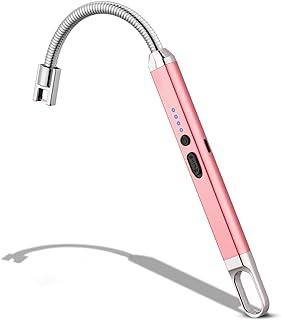The Evolution of the Lighter: From Flint to Flame
The journey of the lighter is a fascinating story of innovation and ingenuity, reflecting humanity's ongoing quest to tame fire. Here's a glimpse into its evolution:
Early Days: Flint and Steel (Ancient Times)
* The earliest methods of fire-starting involved striking flint against iron pyrite (fool's gold) to produce sparks.
* These sparks ignited tinder, a highly flammable material like dried plant fibers or cloth.
* This method, though simple, was unreliable and required considerable skill.
The Dawn of Portable Fire: The Tinderbox (16th Century)
* The tinderbox was a small, portable container for carrying tinder and flint-and-steel.
* It provided a more convenient way to start fires, but still relied on the primitive method of striking sparks.
The First "Lighter": The Wheel Lock (16th Century)
* This invention, originally used for firearms, marked a significant step towards a more reliable way to ignite fire.
* A spring-powered wheel, studded with flint, rotated against a piece of iron pyrite, producing a shower of sparks.
* Though more efficient, it was still bulky and expensive, primarily used for military and hunting purposes.
The Age of Chemical Ignition: The Flintlock (17th Century)
* The flintlock mechanism, used in muskets and pistols, further refined the process of igniting fire.
* A piece of flint struck against a piece of steel, creating sparks that ignited a small amount of priming powder.
* This, in turn, ignited the main charge of gunpowder, firing the weapon.
The Birth of the Modern Lighter: The Friction Lighter (19th Century)
* The first true portable lighter, the friction lighter, was invented in 1826 by Johann Wolfgang D?bereiner.
* It used a platinum sponge catalyst, ignited by hydrogen gas produced through the reaction of zinc with acid.
* Though innovative, its complexity and the dangers of handling flammable hydrogen limited its widespread adoption.
The Spark-Based Revolution: The Flint Lighter (19th Century)
* The flint lighter, as we know it today, emerged in the late 19th century.
* This innovative design used a flint striking a steel wheel to create sparks that ignited a small wick soaked in flammable liquid.
* The advent of lighter fluid and improved designs made it a practical and affordable option for everyday use.
The Rise of the Butane Lighter (20th Century)
* Butane lighters were introduced in the 1930s, utilizing the clean and reliable burning properties of butane gas.
* Their durability, portability, and windproof designs quickly made them the preferred choice over flint lighters.
* The widespread use of disposable butane lighters further revolutionized the lighter market, making fire-starting effortless and inexpensive.
Modern Innovations: The Electric Lighter and Beyond (21st Century)
* Electric lighters, powered by batteries and employing a heated coil to ignite gas, offer a safer, more environmentally friendly alternative.
* Advanced designs incorporate features like wind-proof mechanisms, adjustable flames, and even rechargeable options.
* The future of the lighter continues to evolve, incorporating advanced materials and smart technology for increased efficiency and sustainability.
The Legacy of the Lighter
From the rudimentary flint and steel to sophisticated electric lighters, the evolution of the lighter reflects a continuous drive towards practicality and innovation. It highlights the enduring significance of fire in human civilization, while also showcasing the remarkable ingenuity and progress that have shaped our modern world.


